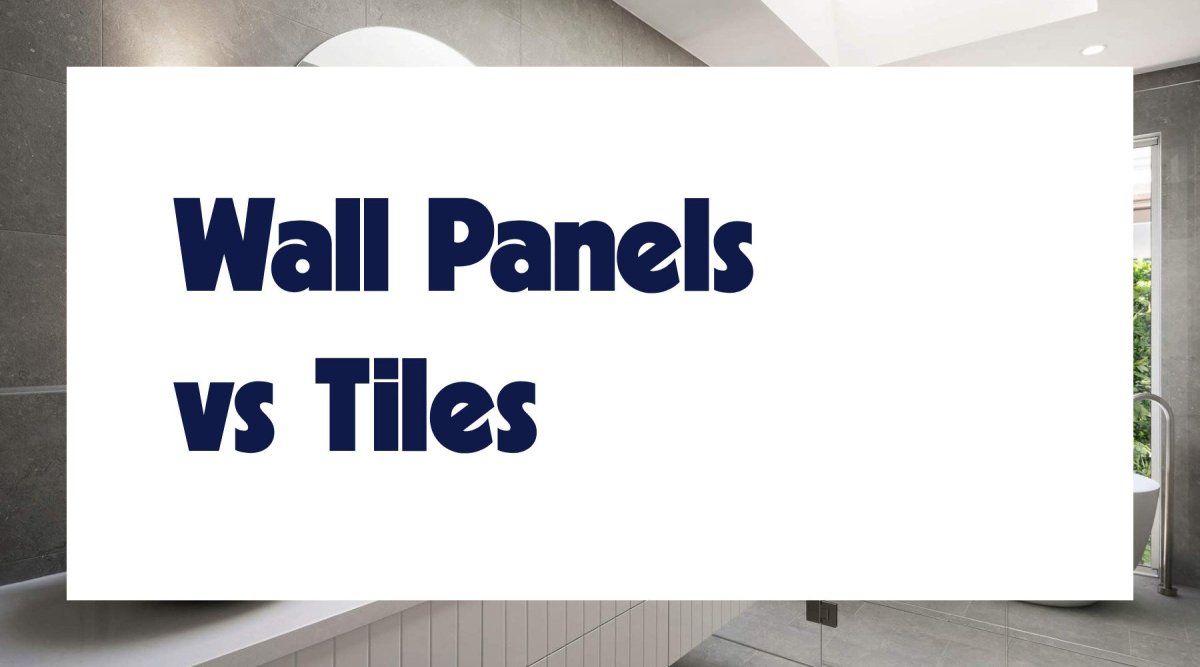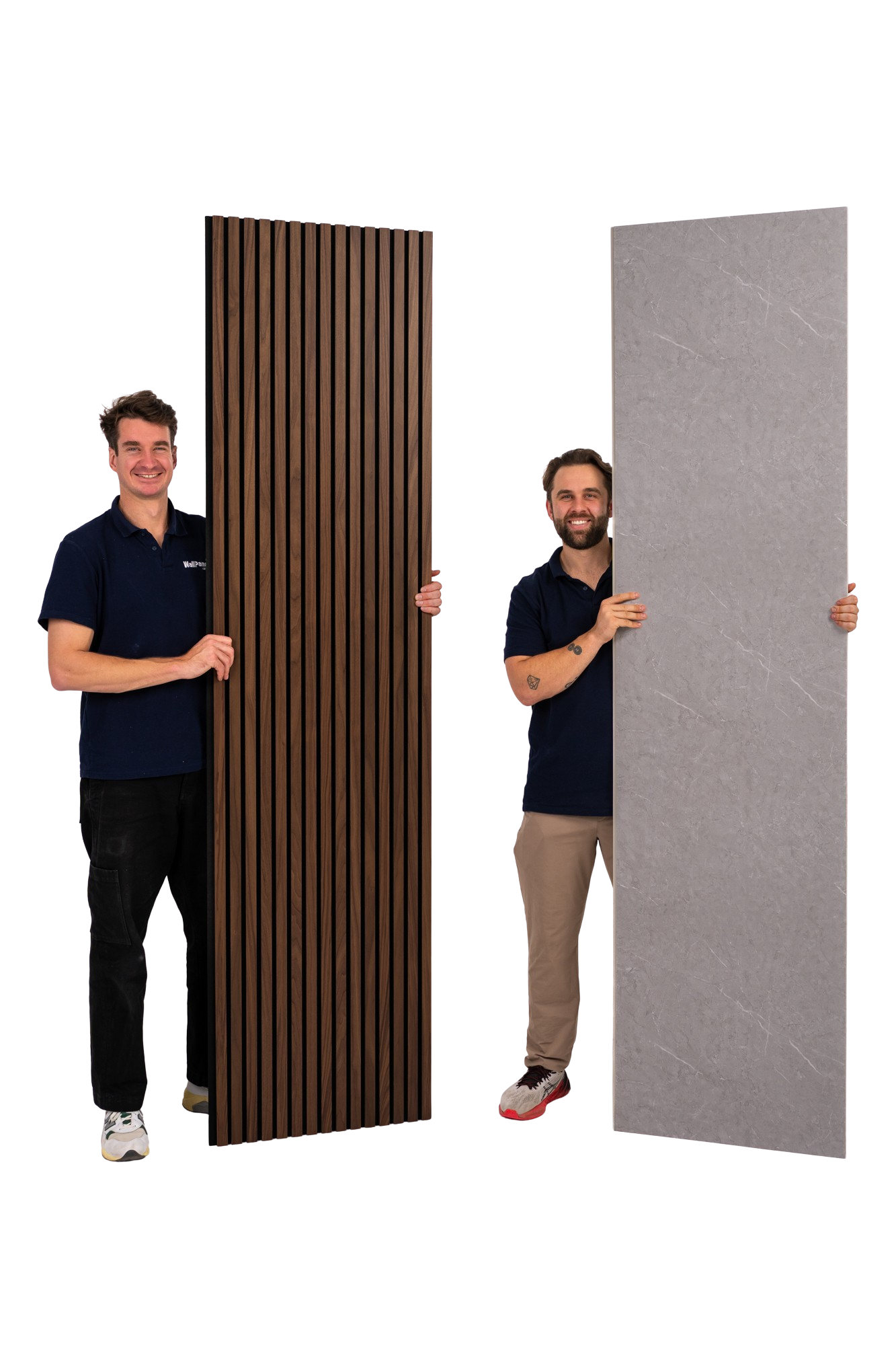The way we decorate our homes and the colors we choose should reflect our personal taste, style, and mood. Our home is, after all, a sanctuary (or should be) where we can rest, relax and recharge at the end of a hectic day and spend our free time in peace and tranquility.
Whilst personal taste and style matter, so does choosing the right colors to create the right mood and feeling. Color has the ability to affect not only our psyche but also our productivity too. How we choose to use splashes of color on the walls or the furnishing we select makes a huge difference to how relaxed and comfortable we feel, or how energized and uplifted we are.
The bathroom is definitely a space that needs careful consideration when thinking about these matters. There can often be a tendency to make it clinical, cold and functional rather than somewhere to lock the door, relax and chill out.
We’ll discover (with some expert insights) how bathroom colors can impact your mood and how to redefine the space to make it your own.
Color psychology as a concept
The idea of color psychology is by no means a new one. Did you know that it was first discussed as a concept, as far back as the 17th century when Sir Isaac Newton made the discovery of how colors were made when light passes through a prism?
He understood colors to be human perceptions of wavelengths of light. From this, he described three different color groups. Primary (red, blue, and yellow), Secondary (mixes of all the different primary colors), and Tertiary (mixes of primary and secondary colors).
The ideas developed over the following years and with advancements in technology and science. The theory of color started to cover the properties of color in its two forms which are paint/print and light/screen. The properties of a color are its hue (which is how it appears), its chroma (how pure it is and what shades or tones it has added to it), and its lighting (that's to say how saturated it is).
It’s little wonder that sometimes when we look at paint charts for our home we feel a little bit bamboozled by all the choices! There are now even trends such as the Pantone Color of the Year, designed to get everyone redecorating their homes with the latest fashion-inspired colors.
What do colors actually ‘say’?
If colors could ‘speak’ to us, what would they say? This can inform the kind of hues you choose for your bathroom. Let's look at some of the combinations of primary and secondary colors to establish what mood they create.
- Red. Using red as an accent paint or for entire walls can have a stimulating effect. It often creates feelings of warmth, motivation, and comfort, depending on the shade and tone used.
- Orange. Orange creates a mood of confidence, warmth, and creativity when used as a feature paint in a room. It can look bright and sunny or muted and earthy depending on the shade you choose and the amount you add into a room.
- Yellow. A positive, happy, sunny color, yellow creates feelings of happiness and vivacity. Used as an accent color it can inspire creativity.
- Green. Green can be such a calming color as it’s often associated with nature, health, and vitality. In the right balance, it can promote feelings of relaxation and balance too.
- Blue. Blue hues offer calm and tranquil effects that are comforting and offer feelings of peace.
- Purple. Purple tones can be calming and uplifting at the same time. Paler lilacs and pastel shades offer calm and clarity whilst deeper shades are passionate and flamboyant.
Within all these colors there will be variations in tones and shade meaning that at their most vibrant they may feel a little too much for a small space like a bathroom, but in more pastel or muted tones can provide just the right amount of depth and feeling.
Colors and bathroom design
Of course, your primary concern when thinking about colors for your bathroom should be whether it suits you and your lifestyle and whether you can live with it in the long term. Trends come and go and it’s fun to experiment, but it’s often better to use neutral or calming bases that can be jazzed up or accented with trend-led designs - which can make it easier to switch up and change when the need arises (and less costly too).
Factors like color temperature and repetition can have a huge impact on our emotions and our moods. We’ll look at this more closely in a moment. Color temperature refers to how warm or cool a shade or tone you choose is. The repetition of it involves using the color or putting it into a design element in the room that’s then used repeatedly (for instance, think about the colors of the towels and bath mats you might choose, you’d want them to match - or the color design of the tiles or bathroom panels you select).
What do experts say about choosing colors for a bathroom? Let’s catch up with a couple and get their opinions.
Is it possible to have vibrant bathroom colours that can still provide a relaxing ambiance, or do you need to stick to neutrals?
“Absolutely, it is possible to have vibrant bathroom colours that can still provide a relaxing ambiance. While neutrals are often recommended for creating a soothing atmosphere, vibrant colours can be used strategically to achieve both vibrancy and tranquillity.
The key lies in the careful selection and combination of colours. Opt for soft, muted versions of vibrant colours, such as pastel or dusty tones, rather than overly bright and intense ones. Soft blues, greens, or purples can evoke a sense of calmness while still adding a touch of vibrancy.
Moreover, consider incorporating vibrant colours as accents or focal points, rather than covering entire walls. This way, you can enjoy the energetic elements without overwhelming the space. For instance, using vibrant tiles as a backsplash, colourful artwork, or a vivid shower curtain can bring life to the bathroom while maintaining a serene overall ambiance.
Another aspect to consider is lighting. Proper lighting can enhance the mood and impact of colours in the bathroom. Ensure the space receives ample natural light, and complement it with warm, soft artificial lighting to create a cozy and relaxing environment.
In summary, vibrant bathroom colours can coexist with a calming atmosphere if chosen thoughtfully and applied in moderation. By blending the right hues, incorporating accents, and paying attention to lighting, you can design a vibrant yet tranquil bathroom space” Cate Griffing co-owner of westmagnoliacharm.com
How could you use paint to make a small bathroom space look bigger and more inviting?
“A small bathroom requires you to be even more considered with your paint choices to make the space feel light, brighter and more open. A bright white is only a good choice on walls if you have a large space with plenty of natural light, in a small bathroom with little natural light, a bright white will make a small room feel flat.
Instead of bright white, opt for off whites with either yellow or pink undertones, they’ll bring a softer and inviting tone to a bathroom and they’ll counteract blue light that is associated with North facing rooms. However, do add a bright white to the ceiling, it will contrast with the wall shade, and it will help to draw the eye up, giving the illusion of higher ceilings in a small bathroom.
Whilst dark colours will make a small bathroom feel even smaller, colour isn’t totally off the menu. Shades such as grey are enduringly popular in bathrooms, but they can make a bathroom feel cold and uninviting. Instead, introduce soft, warm shades such as on-trend sage green, soft tones of blue and dusty shades of pink. These warming tones will provide an inviting feeling to a small bathroom, and the softer tones can help a bathroom feel more open.” Nicole Sage Interior Designer and owner of sleek-chic.co.uk
What small changes can you make with paint to revamp and refresh a tired bathroom?
“Paint can be a powerful tool to transform a tired bathroom into a fresh and inviting space. You can use it to brighten up the walls, add drama to the ceiling, or give new life to fixtures.
Here are a few ideas:
Paint the walls: A fresh coat of paint is the most obvious way to update a bathroom. You can choose a light colour to brighten up the space, or a dark colour to add drama.
Paint the ceiling: A painted ceiling can add a touch of personality to a bathroom. If you have a high ceiling, you can paint it a dark colour to make the space feel more intimate. If you have a low ceiling, you can paint it a light colour to make the space feel taller.
Paint the vanity: A dated vanity can be quickly and inexpensively transformed into a statement piece with a new coat of paint.
Paint the fixtures: Old and worn bathroom fixtures can be given new life with a coat of paint. There are many different types of paint available, so you can find one that is specifically designed for bathroom use.
No matter what changes you make, be sure to use high-quality paint that is designed for use in bathrooms. This will help to ensure that your paint job will last for years to come.” Karen Highland - Webmaster at Frederick Real Estate Online
What would be the one colour change you could incorporate in a bathroom to create a peaceful sense of calm?
When it comes to creating a peaceful sense of calm in your bathroom, one colour change that can work wonders is incorporating a soothing shade of light blue. Blue has the ability to evoke feelings of tranquillity and relaxation, making it the perfect choice for a bathroom sanctuary. Whether it's a pale sky blue or a serene aqua tone, this colour can set the perfect mood for unwinding after a long day or starting your morning with a sense of calm.
Colour psychology suggests that blue can lower stress levels and promote a sense of tranquillity, making it an excellent option for a space where you want to unwind and find a moment of peace. It's like having a mini spa experience right in the comfort of your home!
Of course, personal preferences play a role in choosing the right colour, but if you're looking for that perfect balance between personal taste and a calming ambiance, give light blue a try. Combine it with soft lighting, some plants, and maybe even scented candles, and you'll have a bathroom that feels like a true sanctuary.
Remember, there are no strict rules when it comes to colours, so go with what resonates with you and what brings you that sense of peace and tranquillity." -
Lori Brasseur, Professional Interior Designer, RE Stager, Blogger, Our Purposed Home
What would work best to create a relaxing ambiance in a bathroom - warm tones or cool tones?
We recommend choosing pale, cooler tones to create a relaxing, spa-like bathroom environment. Consider nature-inspired neutrals with green or blue undertones for a tranquil ambiance.
Rooms painted in cool tones tend to appear more open and spacious, which is another reason why cool colours are a great choice for smaller bathroom spaces. Low contrast between walls, trim, and door colours will also help encourage a harmonious and cohesive setting.
Lastly, when selecting paint colours for your bathroom, be sure to choose a water-based, eco-friendly paint product that you can feel good about bringing into your home." - Emma Pugliares, Marketing Director, EcosPaints.
Personal choice in bathroom colors
It’s key to keep your personality at the forefront when thinking about bathroom design and the colors you choose, but it’s also necessary to understand that an element of neutrality is essential to keep the space calming and serene, too. Keep that in mind when selecting your bathroom wall panels.
Think perhaps about clean, warm, neutral wall colors and floor coverings that can then be enhanced by splashes of color and vibrant shades in the fixtures and fittings you choose. These can then be changed at random when trends (and your moods) alter and can be an inexpensive way of keeping a room fresh and vibrant whilst staying in tune with interior inspirations.
It’s important to create a space you feel you can relax and unwind. How many of us can say we get much ‘me time’ these days? Having one room that can become a secure sanctuary and is decorated to reflect that is all the more essential in today’s busy world.






Leave a comment
All comments are moderated before being published.
This site is protected by hCaptcha and the hCaptcha Privacy Policy and Terms of Service apply.